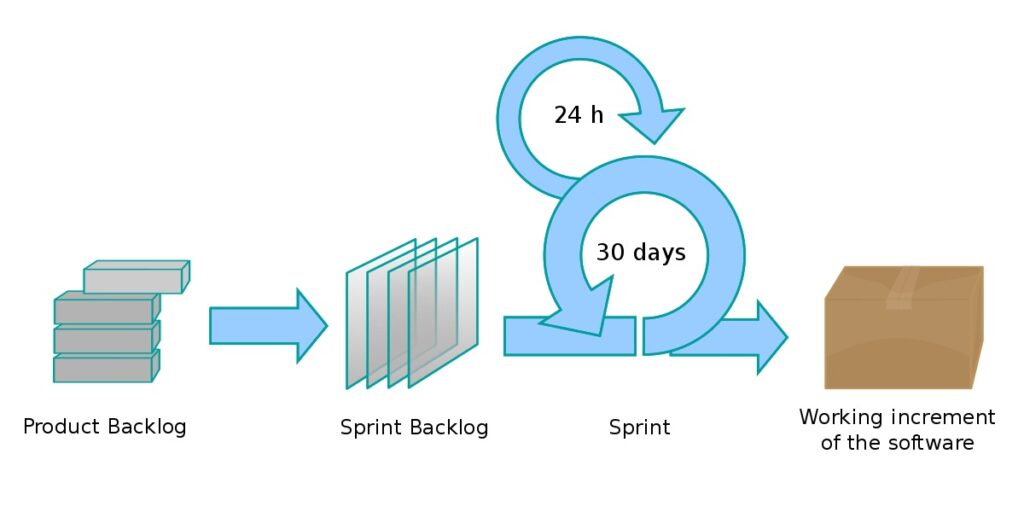According to the Scrum Guide, the role of the management has been in providing insights and information into the importance of the Product and its following capabilities. Moreover, the management backs the Scrum Master to have the freedom to create organizational changes that can help incite experimentation, create its organization, feed up the decentralization of intelligence, and bring forth the most effective release of software’s designed to cater to its audiences.
When organizations change the system by switching from traditional Kaman to Scrum or Waterfall to Agile Framework, managers struggle to cope with the role. Most of them find themselves lagging due to changes in the structure. One of the main reasons we feel strongly about is the Switch, from the self-decision making process and centralized decision making power to the decentralization of power and team-based approach. Work doesn’t stop for most of you here; thus, in our article, we aim to give you real insights into how the role of management is designated into Scrum. We will also cover how Traditional Managers can continue to take an active part in executing the Scrum decision-making process while showing and making the Scrum Team aware of the future pitfalls to avoid.
Managers in Scrum – The Do’s
While business functions are not part of the Scrum Framework, their value to the organization should not be belittled or undervalued. Being exemplary coaches themselves, the Scrum Masters can integrate and advocate Scrum Principles and help the progression of the organization into Agile Frameworks easy. Moreover, they can help address the elephant in the room and thus further help on a diplomatic and a practical level; their support executives can provide additional support too.
Strategic Proponent: If the organization has the same goals to reach, Managers can go out of their way to act as an outside influence to support the Scrum Team in further achieving their part of the work. The Mangers can help steer the direction of the Scrum Team towards the organization’s strategies. Furthermore, valuable feedback helps the Product Owner improve the project’s vision, refine product strategy, and prioritize the Product’s Backlog. To understand more about the Product Owner and the interference of the Management, Pspo certification can help you.

Domain Prowess: Well-seasoned executives are those who have likely spent a majority of their time knowing the ins and outs of the organization. Thus they can act as mentors to assist the development team in exegetic of technical and customer-related problems. Moreover, their guidance can be taken as their expertise as the Scrum Team reaches their career progressions. Pieces of Advice can help the Scrum Team train and develop skills. Lastly, they are always up-to-date with current industry technologies and can help the Scrum Team provides information because of their knowledge.
Operational Fulcrum: Managers can help the Scrum Team enrol new team associates. Furthermore, they can adapt and foretell future affiliate concerns and thus manage the team’s budget.
Managers in Scrum – The Don’ts
We must have a deep understanding of Scrum as a framework, not as a business model. But a framework that aims in getting the maximum value delivered out of the Product. Therefore Scrum voluntarily chooses to leave management out of it. This consequently leads to chaos, as the Scrum Team is no longer required to follow the management’s instructions. As essential it is for the Scrum Team to keep the organization’s management inside the loop. A freehand for the collective decision-making process lets the management know of the power shift in the decision-making process.
These are some of the problems we have encountered for you to get a better idea.
- AD-HOC requests during a Sprint: Management stops the team from processing current tasks.
- A Manager’s Intuition: Getting inspired by other products of competitors is healthy. But forcing your Scrum Team to start developing similar products is not advised.
- Increase Development Speed: Quality is often compromised when the management deems to launch specific customer features.
- Blowing Out Of Proportion: Seeing the appetisers in work, the Management Team should not build unrealistic expectations from the Scrum Team. This leads to tremendous pressure on the Scrum Team.
- Team Espionage: Management tries to track and micromanage the Scrum Team,
Now whether or not you have experienced such situations, it is your responsibility to make your management understand the connotation of the Agile and Scrum Framework. This is the responsibility that falls on the Scrum Master and Product Owner. This gap between the Scrum team and management can be easily bridged if close positive relationships are catered between the management and Scrum Team. Only if both sides assay and content towards helping each other, then only both can peacefully co-exist.







